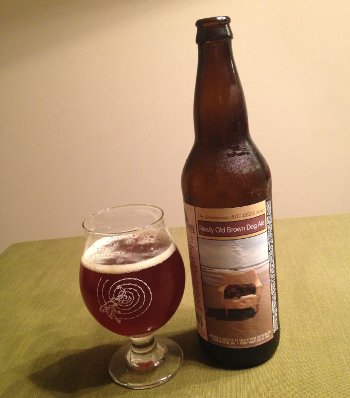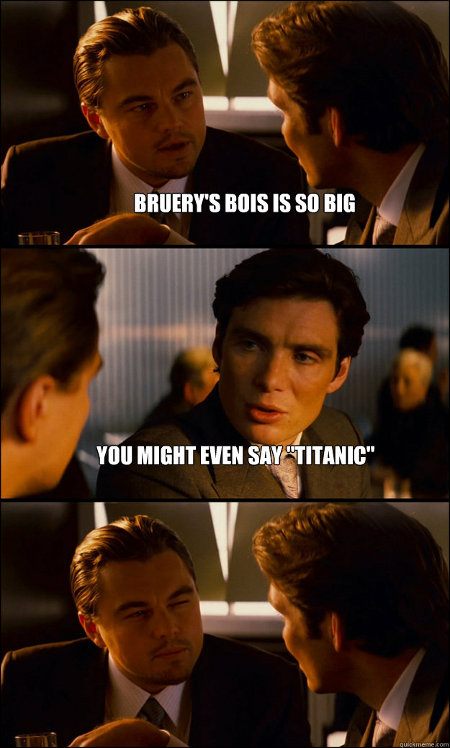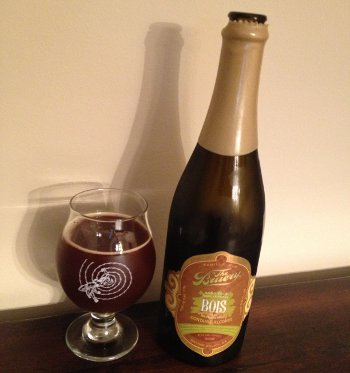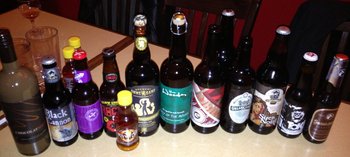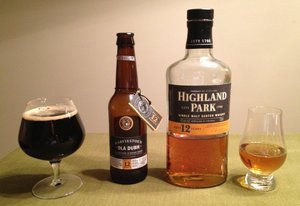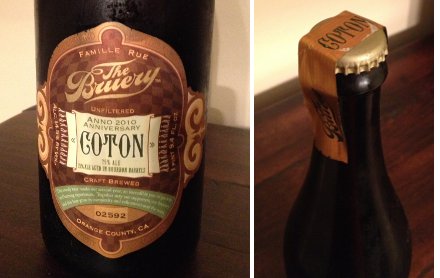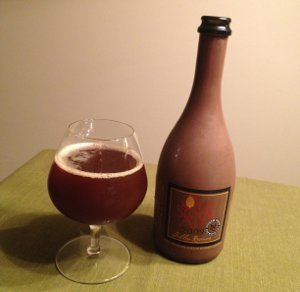Ola Dubh is a series of beers aged in Highland Park Scotch casks. There are 5 vintage of casks used for this purpose, 12, 16, 18, 30, and 40 years old. A while back, I cracked open the 16, which was very nice, and the 40, which was astounding. Today, I’m ticking off two more vintages, so huzzah for that!
Interestingly enough, Scottish distilleries are also huge beneficiaries of the secondary oak barrel market caused by the legal rules surrounding Bourbon. Part of the reason Scotch tends to be aged longer than Bourbon is that the oak is usually on it’s second use at that point, and a lot of the easily captured flavors have already been stripped from the wood. Or something. I’m sure there’s some Scotch that is aged on new oak too…
For the filmic side of this double feature, I watched a pair of Japanese films from little known director Yoshihiro Nakamura. He was a discovery from Fantastic Fest last year, but unfortunately, most of his work is not available in America. However, they have slowly been trickling over, and the two movies I watched are both available on Netflix. The Booth is an interesting, if a bit unremarkable thriller. It was one of his early movies, and it shows. It’s not bad, per say, just not something I’m very enthusiastic about. On the other hand, Fish Story is a wonderful movie that I highly recommend. It’s about how a punk rock song saves the world, which is about all I’ll say about the movie, because the less you know, the better. One of my favorite recent discoveries, and it went quite well with the beery side of this double feature:

Harviestoun Ola Dubh Special Reserve 18 – I have to say, I really love the label design of all these beers, even the ones that don’t come in fancy boxes like the 30 and 40. Pours a deep, dark brown color with a small cap of light brown head. Smells beautiful – tons of whisky character (not very Scotchlike though – no peat or smokiness), a little oak and vanilla and caramel, maybe just a hint of roasted malts in the nose. The taste has tons of that Scotch character, and unlike the nose, I’m getting a lot of peat and heather in the taste (not much in the way of smoke), along with a prominent oak character. There’s plenty of that balancing malt character too, caramel and dark chocolate come through well, and maybe just a hint of that roasted malt flavor. Mouthfeel is surprisingly medium bodied; a light richness, but very easy to drink. Overall, very well balanced, complex brew, definitely better than the 16. A
Beer Nerd Details: 8% ABV bottled (11.2 oz.) Drank out of a snifter on 4/20/12. Bottle Number: 06270. Bottled in February 2009.

Harviestoun Ola Dubh Special Reserve 30 – Pours a little bit deeper and darker than the 18, with a bit more head too. Again, smells very nice, perhaps not quite as strong as the 18, but very well balanced aromas of whisky, oak, and caramel, with a little roast. Taste is very similar. Lots of Scotch, a little peat and oak, some caramel, plenty of chocolate character, and a hint of roast in the finish. Mouthfeel is a little fuller, but but that richness is about the same, and it’s still very easy to drink. Overall, it’s very good, but I find myself think that it’s comparable with the 18, rather than being much better. Don’t get me wrong, this is still a great beer, but tonight, the 18 was better. A-
Beer Nerd Details: 8% ABV bottled (11.2 oz.) Drank out of a snifter on 4/20/12. Bottle Number: 06942. Bottled in March 2009.
So, after trying four of the five varieties, I’d say the best was the 40, followed by the 18, then the 30, and finally, the 16. Now I just need to get my hands on the 12. Strangely, it seems to always be sold out whenever I see some of this stuff, perhaps because it’s also the cheapest of the family (and this stuff really is expensive!) I also have to wonder how the age has impacted these bottles. Every bottle I’ve ever had has been from 2009, including the two varieties I had last year. Would a “fresher” 30 be better? Perhaps! I guess there’s only one way to find out, eh?
